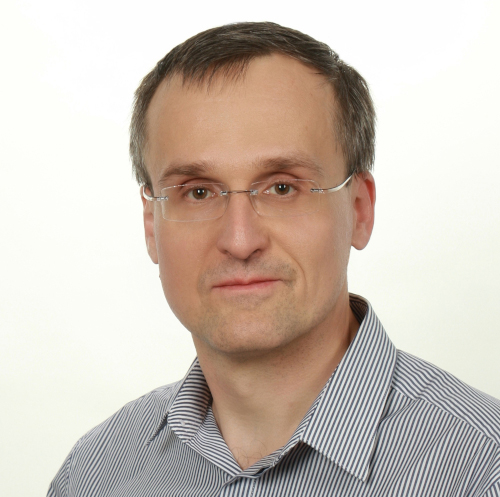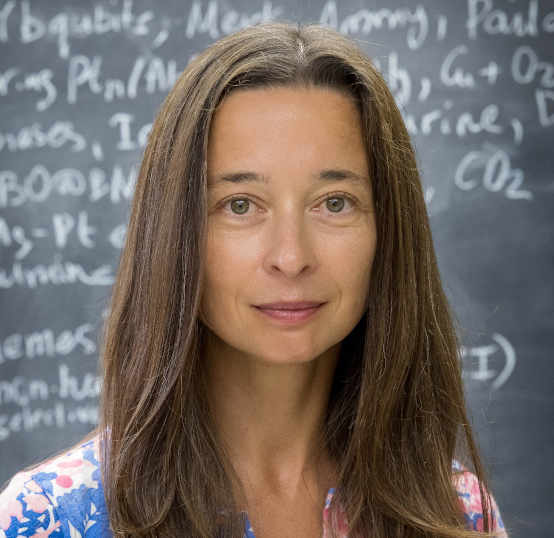QBIC Society Awards
The QBIC Society Award recognises outstanding contributions in the field of inorganic and bioinorganic chemistry that were achieved with theoretical, quantum chemical or computational methods in general. The award is intended to recognise a specific body of work, developed in one paper or a series of papers, that established new chemical or physical insights into a long-standing question, developed a new method or concept, or defined a new research direction. Calls for nominations open biannually. Awardees are given the opportunity to present their research in award lectures at an international QBIC meeting.
Awardees
2024 award: Dr. Mariusz Radoń
 The award of the Society for 2024 is given to Dr. Mariusz Radoń (Jagiellonian University, Krakow). The award recognizes the outstanding contributions of Dr. Radoń to the accurate prediction of energetics in transition metal complexes. His work is characterised by the careful combination of state-of-the-art computational methods and the development of elaborate protocols for controlling sources of errors and maximizing accuracy and reliability.
The award of the Society for 2024 is given to Dr. Mariusz Radoń (Jagiellonian University, Krakow). The award recognizes the outstanding contributions of Dr. Radoń to the accurate prediction of energetics in transition metal complexes. His work is characterised by the careful combination of state-of-the-art computational methods and the development of elaborate protocols for controlling sources of errors and maximizing accuracy and reliability.
2023 award: Dr. Anastassia Alexandrova
 For the year 2023 the award of the Society is given to Dr. Anastassia Alexandrova (University of California, Los Angeles). The award recognizes the outstanding contributions of Dr. Alexandrova to investigating and understanding the role of electrostatics in enzymatic catalysis, using multi-scale modelling methods that combine classical simulations with rigorous quantum mechanical approaches to elucidate mechanisms of electrostatic regulation and electric field effects on reactivity and catalysis.
For the year 2023 the award of the Society is given to Dr. Anastassia Alexandrova (University of California, Los Angeles). The award recognizes the outstanding contributions of Dr. Alexandrova to investigating and understanding the role of electrostatics in enzymatic catalysis, using multi-scale modelling methods that combine classical simulations with rigorous quantum mechanical approaches to elucidate mechanisms of electrostatic regulation and electric field effects on reactivity and catalysis.
2021 award: Dr. Ragnar Björnsson
 The winner of the 2021 award is Dr. Ragnar Björnsson (Max Planck Institute for Chemical Energy Conversion). The award recognizes the outstanding contributions of Dr. Björnsson to the understanding of biological nitrogen reduction, in particular his quantum chemical investigations on the electronic structure and properties of the iron–molybdenum cofactor (FeMoco) of Nitrogenase, its vanadium analogue, as well as on the nature of intermediate forms adopted by the cofactor along the catalytic cycle of biological nitrogen reduction.
The winner of the 2021 award is Dr. Ragnar Björnsson (Max Planck Institute for Chemical Energy Conversion). The award recognizes the outstanding contributions of Dr. Björnsson to the understanding of biological nitrogen reduction, in particular his quantum chemical investigations on the electronic structure and properties of the iron–molybdenum cofactor (FeMoco) of Nitrogenase, its vanadium analogue, as well as on the nature of intermediate forms adopted by the cofactor along the catalytic cycle of biological nitrogen reduction.
2020 award: Dr. Martin Srnec
 The winner of the 2020 award is Dr. Martin Srnec (J. Heyrovský Institute of Physical Chemistry). The award recognizes the outstanding contributions of Dr. Srnec to the theoretical treatment of chemical reactivity, specifically the development of the concept of (a)synchronicity of electron and proton transfer and its application to hydrogen-abstraction reactions, as well as the theoretical description of kinetic energy distribution within reactive modes in relation to reaction selectivity.
The winner of the 2020 award is Dr. Martin Srnec (J. Heyrovský Institute of Physical Chemistry). The award recognizes the outstanding contributions of Dr. Srnec to the theoretical treatment of chemical reactivity, specifically the development of the concept of (a)synchronicity of electron and proton transfer and its application to hydrogen-abstraction reactions, as well as the theoretical description of kinetic energy distribution within reactive modes in relation to reaction selectivity.
Copyright © QBIC Society